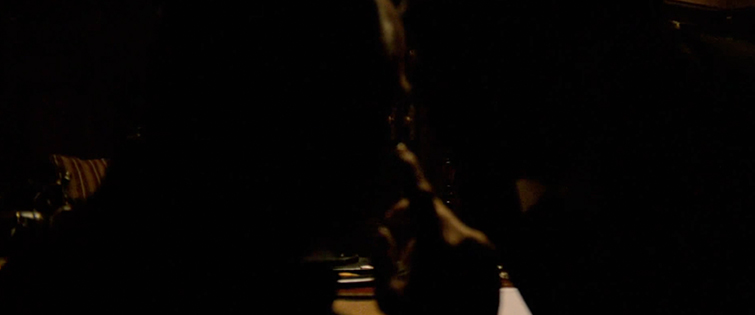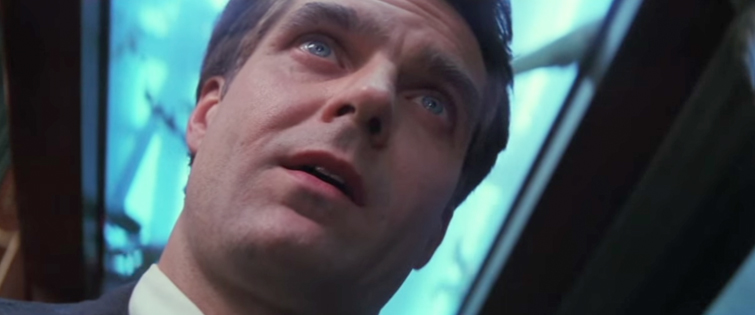
How to Compose a Cinematic Shot Reverse Shot
Dialogue-heavy moments of character interaction can quickly bog down a film’s pacing. Energize those situations with a cinematic shot reverse shot.
Top Image via Paramount Pictures
Early in history of cinema, filmmakers learned that standard two shots of character interaction could get boring pretty quickly. Many realized that they could push a film’s pacing along by changing shots intermittently during these moments, leading to the creation of the classic shot reverse shot technique.
What Is a Shot Reverse Shot?
A shot reverse shot is a framing technique used for continuity editing in film or video production. This type of framing, when edited together, gives the audience a sense of continuous action, making it seem as though the scene they’re watching is happening linearly in real time. As stated above, this technique became a staple of classic Hollywood. But how do you set it up?

When setting up for a shot reverse shot, you’ll want to use a minimum of two cameras. The cameras will rest on one side of the 180-degree line, with each camera focusing on one specific actor. There are several ways to frame this action, with the basic method being an over-the-shoulder shot (like the one above from Casablanca) to establish the presence of the characters.

Moving forward, you can cut to another over-the-shoulder shot for the reaction, or you can frame your second actor tighter. The choice is up to you, obviously. Either way, by capturing the same performance with at least two cameras, the editor has options when cutting the scene together and it’s more visually pleasing to the audience.
Now that we know the basics of the technique, let’s look at some examples of well-crafted cinematic shot reverse shots.
1. Using Motivated Lighting in Framing

This opening scene from The Godfather showcases an incredible shot reverse shot. What makes this particular scene so amazing is the choice of introductory framing, as well as the lighting. Director Francis Ford Coppola and cinematographer Gordon Willis begin the scene in complete darkness. We hear a voice and then the undertaker is revealed, shrouded by darkness. As he continues to speak, the frame slowly zooms back to an over-the-shoulder shot that reveals Don Corleone.

The undertaker approaches Corleone and whispers in his ear. The two characters nearly cover the frame in complete darkness, which alludes to the nature of the discussion. We move to a more traditional setup as the scene progresses, but this introduction is a great example of how to use a shot reverse shot to establish the mood and tone of both a scene and an entire film.
Video via Yusuft99
2. Creativly Capturing a Single Actor Conversation

In 2002’s Spider-Man, we watch Norman Osbourne have a conversation with his alter ego, the Green Goblin. Director Sam Raimi and cinematographer Don Burgess used a mirror to capture a two-way conversation that featured only one actor. The scene begins with Osbourne hearing voices. He sees his reflection in the mirror. The Green Goblin alter ego walks toward the frame. This is broken with the reveal of Norman walking toward the mirror to complete the opening over-the-shoulder shot.

We move to a shot reverse shot where the rest of the conversation takes place in opposite angles of the mirror’s reflection, the camera slowly tracking into a tighter shot. By utilizing this framing, the audience gets a sense that Osbourne isn’t just having a conversation with himself — but with the manifestation of his alter ego. It’s an effective and creative way of capturing a shot reverse shot with a single actor.
Video via DrBartKeppel’s channel
3. Composing the Frame With Motivated Movement

In this scene from The Dark Knight, we get a fairly straightforward shot reverse shot. However, the key to this scene is the movement of the camera. Gordon and the Joker are situated in the shadows. The camera slowly tracks in as the conversation moves along and the tension between Gordon and the Joker intensifies. But the key takeaway here is that the camera movement is smooth, implying that things are under control.

That all changes with the appearance of Batman. At first, the scene sticks with a standard shot reverse shot — but the camera becomes more active, implying to the audience that the very idea of control is beginning to fade. During the final section of the scene, the shot reverse shot moves to handheld, and the camera’s movements become even more active. This (along with the swelling music) highlights that the Joker, an agent of chaos, has gotten to Batman, affecting him emotionally and mentally. This is the mark of using motivated movement to perfection.
Video via fuel for the space
4. Changing the Frame Without Moving the Camera

While the whole of The Wolf of Wall Street is an incredibly insane ride, one scene arguably stands out above the others: the meeting between Jordan Belfort and Mark Hanna. Martin Scorsese creates a sublime example of the classic shot reverse shot technique. He places the characters on opposite sides of the frame to allow for a smooth conversation.

However, Scorsese changes things up in the framing. In the beginning of the scene, the shot of Hanna is fairly wide, giving the viewer a sense of the surroundings. Then Hanna leans in, and without even moving the camera, Scorsese crafts a close-up shot. Using this technique instead of dollying in helps retain the wide scope of the background action while keeping the audience at the same distance to Hanna as Belfort, placing them at the table, privy to the conversation.
Video via OGF
5. Effectively Using the Dutch Angle

The shot reverse shot is traditionally the go-to technique for making conversations flow and seem genuine — but sometimes the script calls for a break with convention, especially when filming a scene for a thriller like Mission: Impossible.

While director Brian De Palma does utilize standard coverage for the scene, the conversation starts with a harsh dutch angle. By using the dutch angle to frame the shot reverse shot, De Palma mirrors the feelings of Ethan Hunt as he discovers that his whole world is being turned upside down. What makes this shot reverse shot even more effective is the fact that Kittridge’s angle begins leveling out into a standard frame while Hunt remains in the dutch angle. This is a great example of using off-axis framing to capture a character’s escalating emotions and internal drama.
Video via Movieclips
What are your favorite shot reverse shots? Show us in the comments below!





